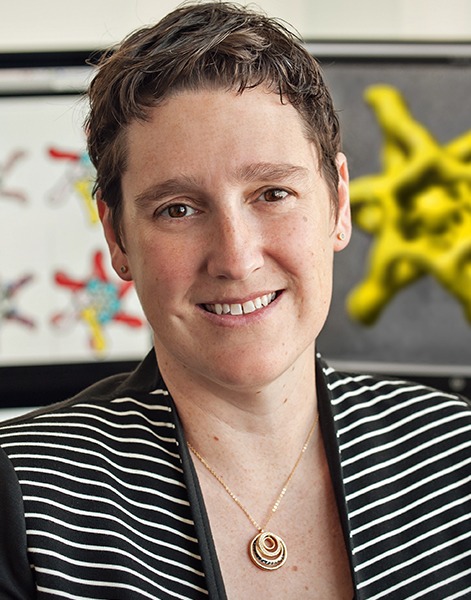
LSI welcomes new faculty member

The University of Michigan Life Sciences Institute welcomes structural biologist Melanie Ohi, Ph.D., to its faculty.
Ohi joins U-M as a research associate professor at the LSI and an associate professor of cell and developmental biology at the U-M Medical School. She comes to the LSI from Vanderbilt University, where she was an associate professor of cell and developmental biology and the scientific director of the Vanderbilt Structural Electron Microscopy Facility.
At the LSI, Ohi’s research program will use a combination of cryo-electron microscopy (or cryo-EM), genetics and biochemistry to study the structural organization of molecular machines and how their structures affect function.
“I’ve always been fascinated by the idea of how these really complicated machines come together and then move,” Ohi explains. “That will be the overarching theme of the lab’s work.”
Specifically, Ohi is focused on dissecting the functional organization of the spliceosome, a molecular machine composed of RNA and proteins. This machine is what enables the human body to make about 90,000 different proteins from instructions encoded on only 25,000 genes.
While the structure of the spliceosome is known, Ohi hopes to use the LSI’s advanced cryo-EM facility to shed light on precisely how its numerous components organize and then function together within the cell.
“We work with single-particle cryo-EM, where we purify proteins from their cellular environments and then determine their structures,” Ohi explains. “So they’re not necessarily in the context that you would find when the proteins are in the cell. Then we use genetics and biochemistry as ways to circle back to understand how structure impacts function in the context of the cell.”
Other research projects in Ohi’s lab will investigate pore-forming toxins that are involved in bacterial pathogenesis and study the ways proteins can interact with and structurally alter membrane organization.
Ohi’s interdisciplinary approach is an excellent fit with the LSI’s research environment, where collaborations among labs are highly valued and encouraged, says LSI Director Roger Cone.
“The LSI already has great strength and specialization in structural biology, and Dr. Ohi brings a world-class research program on the structure and function of the spliceosome, as well as membrane remodeling by both host proteins and bacterial toxins,” Cone says. “She also brings great management experience, having run a cryo-EM core at Vanderbilt University.”
While at Vanderbilt, Ohi worked to improve access to the electron microscopy facility for all interested researchers across the campus. She now hopes to do the same at the LSI.
“The LSI has one of the premier cryo-EM facilities in the country,” she says. “I’m hoping that we will be able to use this equipment to solve challenging structural problems, while also helping the LSI expand the impact of its cryo-EM facility to the entire university.”


